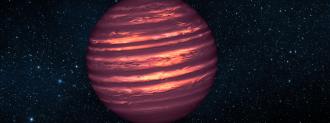Like Britney Spears circa 2001, brown dwarfs exist in a sort of limbo — the astronomical objects are too massive to be planets, but not heavy enough to be stars.
Scientists are highly interested in these cosmic tweens as they could improve our understanding of planet formation, exoplanets, and potentially even dark matter.
But brown dwarfs are elusive — because they aren’t very bright, scientists can’t detect most of them with standard telescopes.
Brown dwarfs do give off heat in the form of infrared light, and NASA has been using telescopes that can capture that light to survey the sky for years. However, the agency lacks the personnel needed to hunt through the trillions of pixels of images it’s collected for the tell-tale signs of brown dwarfs.
“Despite the abilities of machine learning and supercomputers,” NASA wrote in August, “there’s no substitute for the human eye when it comes to scouring telescope images for moving objects.”
Now, NASA has released a highly detailed 3D map of nearby brown dwarfs, including dozens never before announced — and it wouldn’t have been possible without the help of 150,000 citizen scientists.
Citizen scientists are members of the general public who volunteer their time to help the scientific community.
Since 2017, thousands of such volunteers have been racing to discover brown dwarfs in telescope images as part of Backyard Worlds: Planet 9, a NASA-funded citizen science project.
The general public can play an important role in cutting-edge astronomy.
Aaron Meisner
The reason for their rush: NASA was scheduled to retire the only operating observatory that could confirm the locations of any new brown dwarfs (the Spitzer Space Telescope) in January 2020.
By the time the project hit its deadline, the citizen scientists had discovered dozens of new brown dwarfs that scientists were able to study with Spitzer. Now, NASA has released the 3D map depicting the locations of 525 brown dwarfs in our cosmic neighborhood.
“The Backyard Worlds project shows that the general public can play an important role in cutting-edge astronomy,” Aaron Meisner, co-founder of Backyard Worlds, said in a press release.
“Volunteers ranging from high school students to retired engineers are helping uncover groundbreaking discoveries lurking in existing telescope data.”
We’d love to hear from you! If you have a comment about this article or if you have a tip for a future Freethink story, please email us at [email protected].






